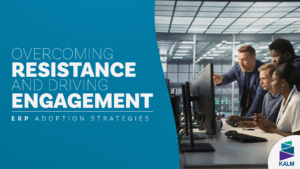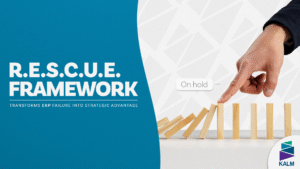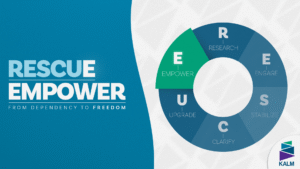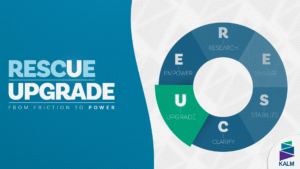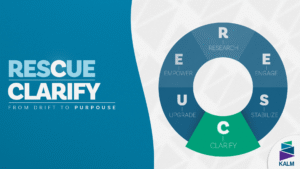From Resistance to Engagement
Even after go-live, many ERP projects face challenges with user adoption. Resistance is not just about the technology—it stems from habits, emotions, and years of reliance on legacy tools.
To succeed, organizations need ERP adoption strategies that address resistance constructively, build confidence, and create lasting engagement. This article explores practical approaches to overcome resistance, enable teams, and turn skeptics into champions.
1. Driving Adoption Through Smart Enablement
Training vs Enablement
Training explains how to use ERP features. Enablement ensures employees can confidently apply them in real work. The difference is the gap between knowing and doing.
Effective enablement requires:
- Interactive workshops where employees practice real workflows.
- Short video tutorials for quick reference.
- Quick-reference guides pinned within the ERP.
- Sandbox environments for low-pressure exploration.
- Office hours and open Q&A sessions for ongoing support.
When enablement is treated as a continuous process, adoption shifts from compliance to empowerment.
Create Champions, Not Just Trainers
Champions are power users who bridge the gap between the ERP team and daily operations. Unlike external trainers, they are trusted peers who understand business realities.
To maximize impact, organizations should:
- Identify respected employees across departments.
- Provide champions with advanced ERP training.
- Recognize and reward their contributions.
- Empower them to share best practices in their teams.
Case Example: A distribution company trained department leads as ERP champions. Within three months, support tickets dropped 40% because employees preferred asking trusted peers first.
Make Support Human and Accessible
Support must feel personal. When employees encounter issues and only face generic FAQs, they retreat to old habits.
User-friendly support strategies include:
- Dedicated ERP channels in Teams or Slack.
- Tiered support systems where quick fixes are automated, but complex issues reach real experts.
- Top-issues dashboards showing common problems and solutions.
When support is fast and human, frustration decreases—and confidence grows.
2. Dealing with Resistance and Legacy Habits
Recognize the Emotional Cost of Change
Legacy tools like spreadsheets often represent years of effort and even personal pride. Dismissing them as “bad” creates resentment.
Instead, acknowledge their value while making the case for ERP:
- “This process worked for us in the past, but now we need more scalability.”
- “Your expertise with the old system is valuable—it helps us transition successfully.”
Respect builds trust, and trust eases resistance.
Listen First, Then Respond
Resistance often reveals legitimate concerns. Before defending ERP, ask questions:
- “What about the new process feels harder?”
- “What are you worried you’ll lose?”
- “What would make this transition easier?”
Active listening provides two benefits:
- It validates employees’ perspectives.
- It reveals gaps that adoption strategies can address.
Leaders who listen first are far more likely to win lasting buy-in.
Sunset Old Systems Gradually
A hard cutoff from legacy tools can create panic. Instead, design a phased transition:
- Run ERP alongside old tools temporarily.
- Compare outputs side by side to show ERP advantages.
- Collect success stories to build momentum.
- Set a clear, communicated end date for old systems.
By combining patience with firm deadlines, organizations ensure smoother adoption without prolonging dependency.
3. Expanding ERP Adoption Strategies with Leadership and Culture
The Role of Leadership in Adoption
Leaders cannot delegate adoption to IT alone. They must model commitment:
- Use ERP dashboards in meetings.
- Publicly share wins from ERP usage.
- Recognize employees who embrace the system.
When leaders “walk the talk,” employees follow.
Building a Culture of Continuous Improvement
Adoption is not a one-time milestone—it is a journey. Organizations should embed ERP adoption strategies into culture by:
- Hosting quarterly adoption check-ins.
- Sharing performance metrics tied to ERP usage.
- Encouraging teams to suggest improvements.
This cultural reinforcement ensures ERP stays relevant and valuable over time.
4. Practical Tips to Overcome Resistance
- Start small: Focus on one department or workflow first.
- Show quick wins: Highlight time saved or errors reduced after using ERP.
- Make it personal: Tailor benefits to each role.
- Recognize effort, not just results: Celebrate employees who try, even if mistakes happen.
- Keep communication open: Provide multiple channels for feedback.
These practical tactics ensure that resistance becomes an opportunity for learning, not a barrier to progress.
From Resistance to Advocacy
ERP adoption challenges are inevitable, but resistance can be transformed into momentum.
With the right ERP adoption strategies, organizations can:
- Enable employees through continuous learning.
- Empower champions to lead adoption from within.
- Respect legacy habits while guiding gradual change.
- Build a culture of trust, transparency, and improvement.
True ERP success comes when resistance gives way to engagement—and engagement grows into advocacy.
Do You Feel Resistance to Change in Your Company?
Book a free 30-minute session with our specialized ERP consultants.
We’ll help you overcome resistance, align your team, and turn adoption into real results.


